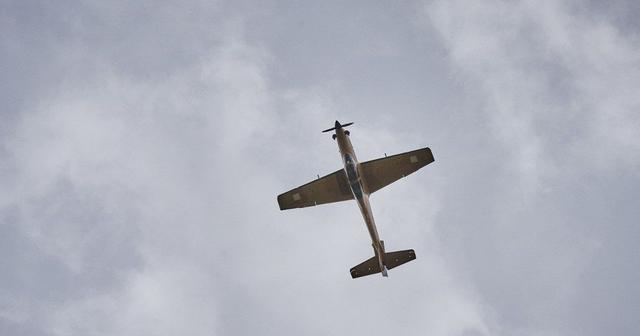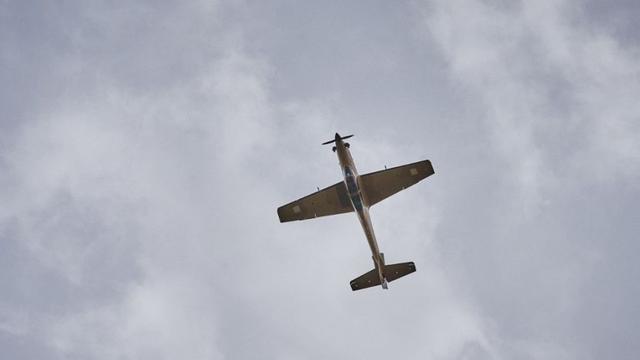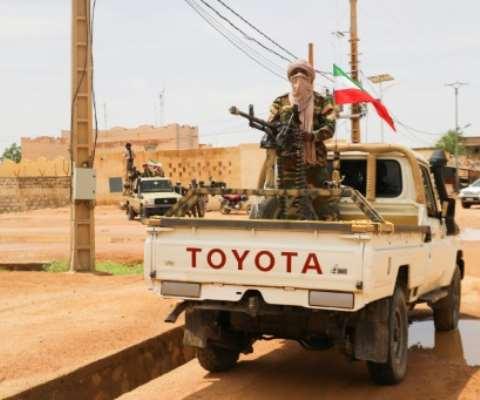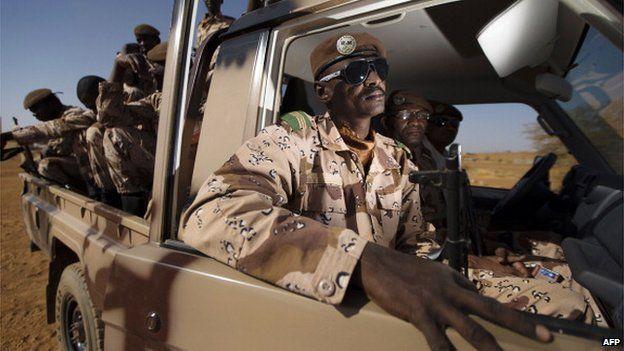Malian Fighter Jets Fly Over Kidal, Triggering Retaliation from CMA
“Tragic Plane Crash in Mali: Unveiling the Devastating Incident That Sent Shockwaves Across the Nation”
Recent Incident Involving Malian Fighter Jets Over Kidal and Other Northern Towns

On Wednesday, several fighter jets from the Malian Air Force flew at low altitudes over Kidal and several other towns in northern Mali. This incident has escalated tensions between the Malian government and former rebel groups in the region. The former rebel coalition, known as the Coordination of Movements of Azawad (CMA), has strongly condemned these flyovers, labeling them as a “blatant violation of the ceasefire” and a “serious provocation.”
The low-altitude flyovers by the Malian fighter jets are seen as a direct challenge to the authority of the CMA and an attempt by the Malian government to assert control over the region. These flights have raised concerns about potential casualties or damage that might have resulted from such provocative actions. It is crucial for both parties to exercise restraint and engage in peaceful dialogue to de-escalate tensions.
Potential Consequences of Flyovers:
- The flyovers could have caused panic among civilians in Kidal and other affected towns, leading to an increased risk of violence or unrest.
- The CMA may respond with retaliatory actions, further escalating hostilities between them and the Malian government.
- The international community may express concern over this latest incident, urging both parties to uphold ceasefire agreements and work towards lasting peace in Mali.
Former Rebel Coalition Reacts to Low-Altitude Flyovers by Malian Air Force

The Coordination of Movements of Azawad (CMA), made up of various former rebel groups in northern Mali, has strongly condemned the low-altitude flyovers conducted by the Malian Air Force. The CMA sees these flyovers as a clear violation of the ceasefire agreement and perceives them as a deliberate provocation by the Malian government.
The CMA has expressed its concern over the safety and well-being of civilians in the affected areas, pointing out that such actions can incite fear and potentially lead to violent reactions. The coalition has called on the Malian government to respect the ceasefire agreement and engage in peaceful negotiations to address any outstanding issues.
CMA’s Response:
- The CMA has issued a statement denouncing the flyovers and demanding an immediate halt to such provocative actions by the Malian Air Force.
- They have called for an international investigation into the incident to hold those responsible accountable for their actions.
- The former rebel coalition has urged other members of the international community, including regional bodies and peacekeeping missions, to intervene and help de-escalate tensions between their group and the Malian government.
Specific Aircraft Identified in the Incident Over Kidal and Other Northern Towns
According to multiple sources, including eyewitnesses and military experts, two specific types of aircraft were identified during the low-altitude flyovers over Kidal and other northern towns. These aircraft are believed to belong to the Malian Air Force:
Identified Aircraft:
- L-39 Albatros: A light attack and training aircraft that can also be utilized for ground attack missions. It is known for its maneuverability.
- Sukhoi Su-25: A close air support aircraft designed for low-altitude, high-speed operations. It is heavily armed with various munitions.
The presence of these specific aircraft types raises concerns about potential military escalation and the potential use of air power in the ongoing tensions between the Malian government and former rebel groups.
Increase in Tensions Between Malian Government and Former Rebels in the North

The tension between the Malian government and former rebels in the northern regions of the country has been steadily increasing. On Wednesday, April 5th, several fighter jets from the Malian Air Force were reported to have flown at low altitudes over various cities in northern Mali, including Kidal. These actions have been seen as a clear violation of the ceasefire agreements that have been established between the government and rebel groups.
This incident has provoked a strong response from the coalition of former rebel groups known as the Coordination of Movements of Azawad (CMA). They have denounced the flyover as not only a violation of the ceasefire, but also a serious provocation. The CMA has accused the Malian government of deliberately escalating tensions and undermining efforts to maintain peace in the region.
These recent events highlight the fragile nature of the peace process in Mali and raise concerns about its sustainability. It is imperative that both parties engage in meaningful dialogue to address their grievances and find peaceful solutions to their differences. Failure to do so could result in further destabilization and violence in this already volatile region.
Implications for Regional Security
The increase in tensions between the Malian government and former rebels in northern Mali has significant implications for regional security. The ongoing conflict and potential for further escalation threaten not only stability within Mali but also neighboring countries.
This conflict has already created a humanitarian crisis, with many people displaced from their homes and struggling to access basic necessities. Additionally, it provides fertile ground for extremist groups to exploit instability and establish a foothold in this vulnerable region.
Efforts must be made by regional actors, such as ECOWAS (Economic Community of West African States) and international partners, to support a peaceful resolution to this conflict. It is crucial that these stakeholders come together to de-escalate tensions, prevent further violence, and ensure the safety and well-being of the affected populations.
Engaging in Mediation and Negotiation
Given the history of past violations of ceasefire agreements between the Malian government and rebel groups, it is essential to address the root causes of this conflict through mediation and negotiation. This includes addressing issues such as territorial disputes, access to resources, and political representation.
The international community should support and encourage a comprehensive peace process that includes all relevant stakeholders. Efforts should be made to strengthen existing mediation mechanisms, such as the Algiers Accord, which was signed in 2015 but has yet to fully deliver on its promises.
Mediators should work towards building trust between the parties involved and creating an inclusive environment for negotiations. Local communities, civil society organizations, and displaced populations must also have a voice in shaping the future of their regions.
It is important that both the Malian government and former rebel groups recognize that violence will only perpetuate suffering and hinder progress. Sustainable peace can only be achieved through dialogue, compromise, and a genuine commitment to reconciliation.
Possible Casualties or Damage Resulting from Recent Flyover Incident
The recent flyover incident in Mali has the potential to cause significant casualties and damage. Low-altitude flights by Malian Air Force fighter jets over several towns in northern Mali, including Kidal, have been labeled as a blatant violation of the ceasefire agreement by the coalition of former rebel groups known as the Coordination des Mouvements de l’Azawad (CMA). The act has been seen as a major provocation by the CMA and has heightened tensions between them and the Malian government.
In such situations, there is always a risk of collateral damage and civilian casualties. Low-altitude flyovers can create panic among the local population, leading to stampedes and accidents. Additionally, if these flyovers were conducted with hostile intent, there could be targeted attacks on specific locations, resulting in damage to infrastructure and potential loss of lives.
Impact on Civilian Population:
The civilian population residing in towns that were subject to low-altitude flyovers might experience psychological distress due to the provocative nature of these actions. There is also a possibility of injuries or casualties if any accidents or violent incidents occur as a result of these flights.
Infrastructure Damage:
The intensity and altitude at which the fighter jets carried out their maneuvers could potentially cause structural damage to buildings and infrastructure. The shockwaves generated by low-flying aircraft can put stress on structures, leading to cracks or even collapses. This could further disrupt essential services like electricity, water supply, and transportation systems.
It is crucial for both sides involved in the conflict to consider the potential human cost and physical damage resulting from such actions. De-escalation efforts should be prioritized to prevent any further harm to civilians and ensure that peace talks remain productive.
—————————————————————————————————————————-
Past Violations of Ceasefire Agreements Between Malian Government and Rebel Groups

The recent flyover incident in Mali is not the first instance of ceasefire violations between the Malian government and rebel groups operating in the northern regions. Since the signing of the Algiers Accord in 2015, aimed at bringing stability to the country, there have been several instances where both parties have breached their commitments.
Renewed Hostilities:
Despite the ceasefire agreements, clashes between government forces and rebel groups have occurred intermittently over the years. These confrontations often result in casualties among both armed combatants and civilians caught in the crossfire. The lack of trust and unresolved underlying issues contribute to this cycle of violence.
Non-Compliance with Disarmament Initiatives:
One of the main provisions of the Algiers Accord was disarmament, demobilization, and reintegration (DDR) of rebel fighters. However, progress in this regard has been slow, with some rebel groups still possessing weapons or engaging in illicit arms trade. This non-compliance has hindered efforts to establish lasting peace and security in Mali.
To address these recurring violations and break the cycle of violence, it is vital for all parties involved to recommit to upholding ceasefire agreements and fully implement disarmament initiatives. A comprehensive approach that addresses grievances, promotes dialogue, and ensures transparency is necessary for sustainable peace in Mali.
Background of the Flyover Incident
On April 5, 2022, tensions between the Malian government and former rebels in the northern part of the country escalated when several fighter jets from the Malian Air Force flew at low altitudes over Kidal and other cities in northern Mali. These jets were identified as L-39 Albatros and Sukhoi Su-25 aircraft. The incident was seen by the coalition of former rebel groups, including fighters from the National Movement for the Liberation of Azawad (MNLA), as a clear violation of the ceasefire agreement and a serious provocation.
As news about this flyover incident spread, it further strained the already rising tension between the Malian government and the former rebel groups in northern Mali. The former rebels accused the government of deliberately provoking them and violating their rights under the ceasefire agreement. This incident raised concerns about potential escalations in violence and highlighted the fragile state of peace in Mali.
Immediate Reactions to the Flyover Incident
Following this provocative flyover incident, there were immediate reactions from both sides involved. The coalition of former rebel groups strongly condemned what they considered a blatant violation of the ceasefire agreement. They characterized it as a deliberate act to escalate tensions and undermine peace efforts in northern Mali. The MNLA fighters gathered in Kidal brandished their flags, expressing their discontent with the situation.
On the other hand, representatives from the Malian government initially downplayed the severity of the incident. They claimed that it was a routine military exercise conducted within their sovereign airspace. However, these assertions were met with skepticism by various observers who questioned why such exercises needed to be carried out over densely populated areas.
The immediate reactions to this flyover incident showcased an urgent need for effective communication channels and mechanisms for de-escalation between all parties involved. It became evident that addressing this issue promptly would be crucial to prevent further deterioration of the situation and maintain the fragile peace in northern Mali.
In conclusion, the aviation accident in Mali highlights the need for continuous improvement in aircraft safety measures. The investigation into the incident will provide valuable insights to prevent similar tragedies in the future. It is crucial for authorities and airlines to prioritize passenger safety and ensure rigorous compliance with international aviation standards.
